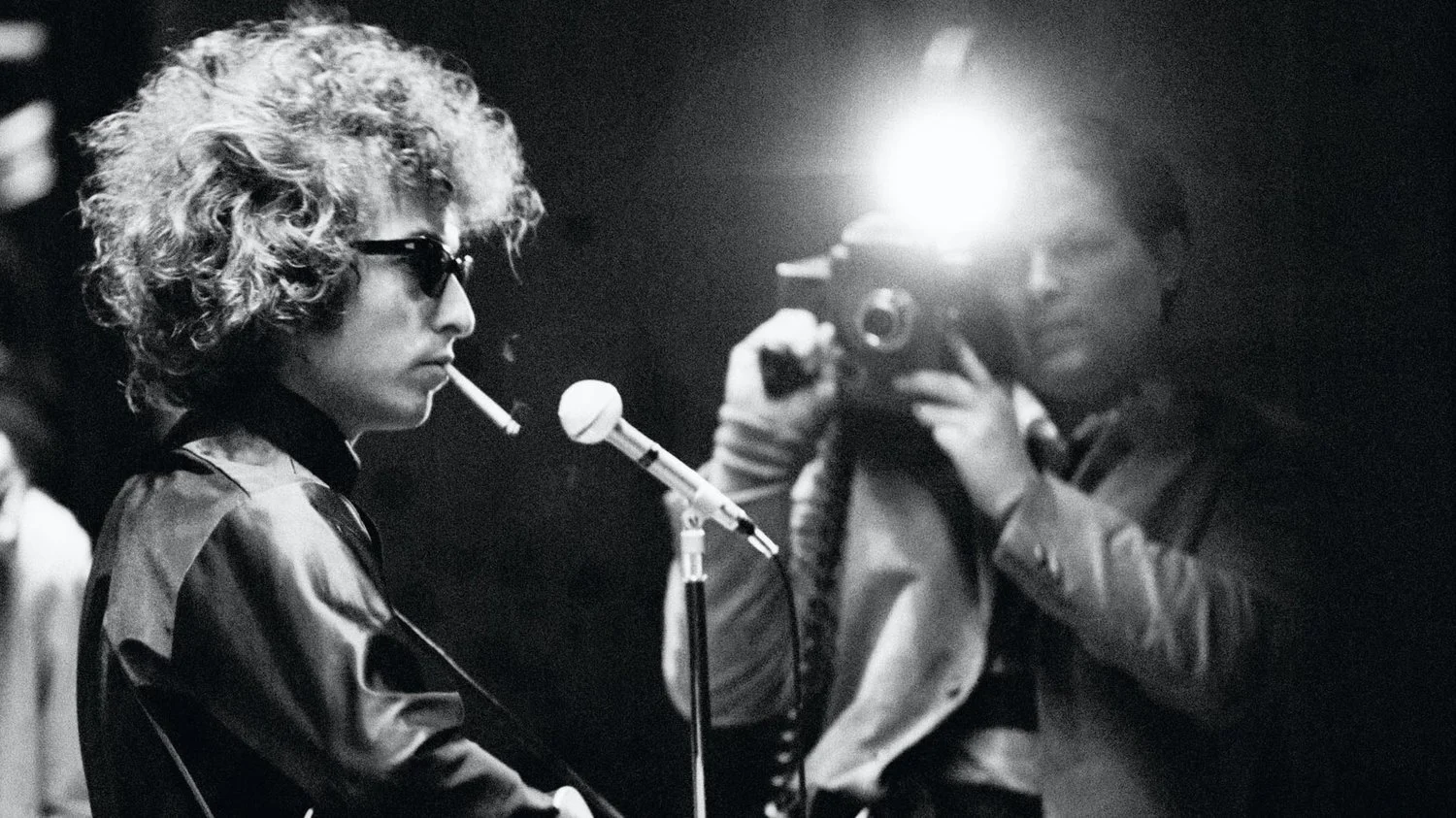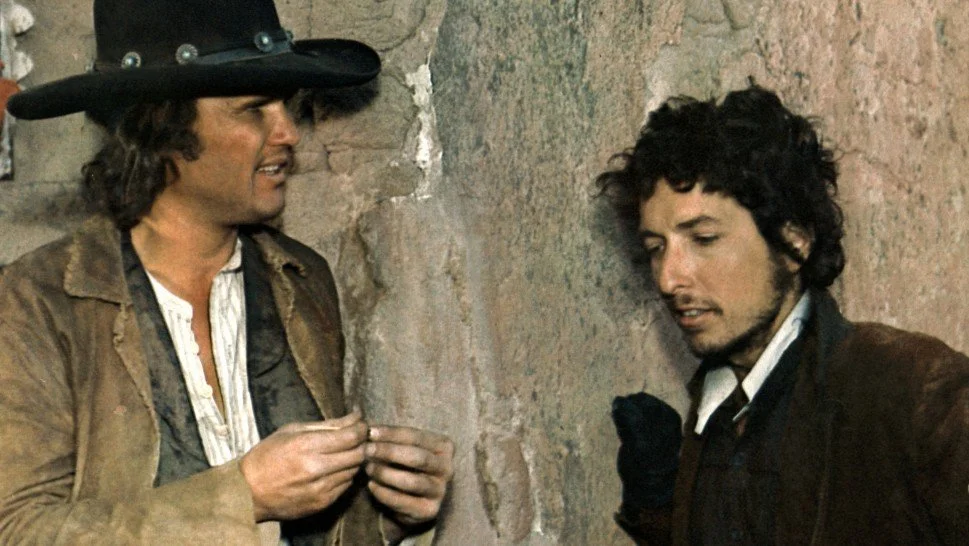Before Timothée Chalamet, There Was Bob Dylan, the Movie Star
A Complete Unknown finally hit theaters this holiday season, and unlike the innumerable other music artists that have had biopics made about them over the last decade, Bob Dylan’s body of work is uniquely in conversation with film history. From references to stars like Brigitte Bardot and Peter O’Toole to direct quotes to films like Freaks (1932) and The Gunfighter (1950), Dylan’s music seems built as much around American film as traditional folk music.
As a legendary cultural icon and avowed cinephile, it makes sense that Dylan would - at various points in his career - transpose his image to the silver screen, sometimes in the form of documentaries but occasionally through dramatic storytelling as well. While some have been praised as classics and others regarded as curiosities at best, his screen presence is undeniably fascinating and deserves a closer look.
Dont Look Back (1967)
Bob Dylan’s first major appearance on the big screen came in the form of a documentary following a young Dylan on the cusp of going electric as he tours England hounded by the press and legions of hangars-on. The film - directed by D.A. Pennebaker in his signature direct cinema style - shows Dylan as a frustrated, often irritable young man struggling with the pressures and expectations of being a famous musical artist, especially one renowned for being the voice of a generation. Most of the film, it feels like Dylan would rather disappear and joke around with his friends than deal with another question from a reporter. For the whole film, Dylan remains an enigma; he never opens up to the camera and barely registers an emotion beyond mildly annoyed (except for one notable exception). This cool, almost calculated remove defined Dylan as a performer and artist for his generation, and even though this film is a documentary, it’s being included here because every appearance from 1967 onward is in conversation with his screen persona here.
Pat Garrett and Billy the Kid (1973)
The trailers for Pat Garrett announced “and introducing, in his first dramatic motion picture performance, recording star Bob Dylan!” While the film received some mixed reviews when it first came out, Dylan won acclaim for his supporting part of Alias, a phantomlike figure who appears throughout the story as an acquaintance of Billy the Kid. While his character’s mission is never clear, Dylan fits into the surrounding western environment admirably, providing a touch of modernity and subtlety to Sam Peckinpah’s eulogy for the Old West. Contrasting his understated performance with great old character actors like Slim Pickens or Chill Wills, Dylan doesn’t always do much with his body or his line readings, but something about the way he carries himself in each scene always makes his presence known.
Renaldo & Clara (1978)
The success of Bob Dylan’s Blood on the Tracks and Desire led to a legendary tour with Joan Baez, Allen Ginsberg, and other similar artists called the Rolling Thunder Revue, an idea that harkened back to the traveling medicine shows of old. During this time, Dylan and everybody involved in the tour shot dozens of semi-improvisational scenes to create a 4-hour downbeat experimental epic Renaldo & Clara, freely mixing in dynamite concert footage with dramatic scenes that basically all critics of the time didn’t know what to do with. It’s a legendarily impenetrable film that blurs the line between reality and fiction, more like beat poetry as a moving image. But whether he’s playing himself, Renaldo, or the camera simply captures him naturally, Dylan is at his most melancholic and lonesome in the film, carrying the weight of the crumbling marriage the film depicts in every dramatic scene.
Hearts of Fire (1987)
Hearts of Fire, despite starring Dylan and American pop-rock star Fiona (who, despite being mostly forgotten nowadays, did manage to get a Top 20 single in 1985), never received a theatrical release in the U.S. The film managed to reach theaters in the U.K., Australia, and a few smaller markets before finally seeing a video release in the States in 1990. To almost any history of Bob Dylan, the film remains an embarrassing footnote to Dylan’s most embarrassing decade, a stab at relevance during a writer’s block period by taking a role in a second-rate Star is Born retread. And while the film suffers greatly from a weak script and a hackneyed romance (as well as mostly bad music, a shocker for a Dylan film), Bob’s role as Billy Parker remains the only reason it’s worth checking out these days. It seems like Parker is meant to be a rock star closer to Steve Miller or Steven Tyler, and seeing Dylan in wild outfits and bleached-blonde hair never stops being a fascinating sight. He maintains his low-key, mysterious aura in the film, which doesn’t quite fit his character or the relationship between him and Fiona, but at the same time, he’s hypnotizingly strange in the film. The film doesn’t fit him well, but it’s worth watching for any Dylan completionist.
Masked & Anonymous (2003)
Bob Dylan’s collaboration with Larry Charles (the director of dozens of Seinfeld episodes and future director of Borat) came on the heels of a critical and commercial comeback of the late 90s and early 2000s. But while albums like Time Out of Mind and Love & Theft found millions of appreciators worldwide, critics tore apart 2003’s Masked & Anonymous and audiences dismissed it as yet another frustratingly ambiguous ego project from an artist who had already delivered a number of those over the years. And yet, time has been kind to this esoteric and frequently hilarious fable, starring Dylan as an over-the-hill rock legend named Jack Fate who is bailed out of prison by a shady booker played by John Goodman for an ambiguous benefit concert. Every actor in the ensemble here, from Goodman and Jessica Lange to scene-stealing cameos from Cheech Marin and Val Kilmer, shine with the aphorism-laden dialogue, but Dylan’s strange way of carrying his body and his deadpan wit (“Guy’s into animals, I guess”) really shines here in a world gone absolutely mad. Of all his efforts into dramatic acting, this might be the most potent showcase as long as viewers surrender themselves to the strangeness of the film itself.
Rolling Thunder Revue (2019)
Rolling Thunder Revue, at first glance, might just look like another rock-n-roll documentary - at least until a mysterious foreign filmmaker named Steven van Dorp begins recalling filming the documentary footage around Dylan’s legendary 1975 tour (the footage that, as mentioned above, was filmed for Renaldo and Clara) and Sharon Stone tells stories about going on tour with the group long before she began her acting career. And it becomes clear to the viewer that Dylan and director Martin Scorsese are delivering audiences something much stranger. Working from much of the same archival footage that Dylan turned into Renaldo and Clara, Scorsese tells a relatively straightforward story of the Rolling Thunder Revue, with the caveat that only half of it is true. Dylan once again dons the mask of deception, and even at his old age, he doesn’t miss a beat recounting false stories as if they’re complete truths. It’s also the most playful he’s allowed his persona to be on screen, openly laughing at times and joking around with the interviewer. While it doesn’t have much of the seriousness and downbeat nature of his earlier roles, it’s the perfect capstone for a cinematic career that’s defined by always keeping a distance between him and the audience.






